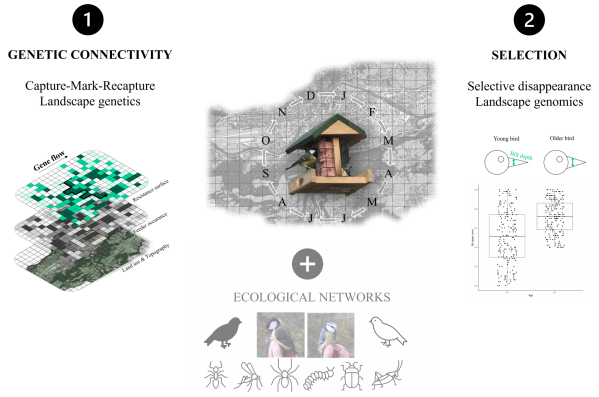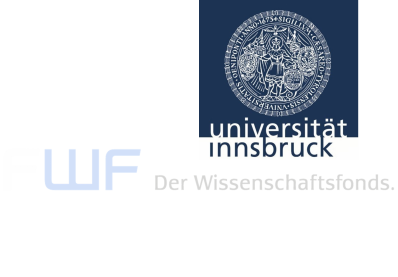ELISE RICHTER
Evolutionary consequences of bird feeding
Background – Bird feeding, that is intentional feeding through the provision of food to free-living birds, is a widespread and extremely popular practice in urban areas throughout Europe. As such, it drastically alters the type, the quantity and the spatial and temporal distribution of food available for birds within urban landscapes. By modifying bird foraging behaviour, bird feeding is likely to have consequences for the evolution of birds in urban environments, especially by exerting selective pressures (e.g. on beak morphology, behaviour or lipid metabolism) and/or by shaping gene flow within the urban landscape. Although bird feeding may be a key driver of urban-linked phenotypic and genotypic changes observed in birds, we critically lack understanding on the role that bird feeding plays on the evolution of birds in urban environments.
Research questions – This project aims at answering two main questions: 1) How does bird feeding shape bird dispersal within urban mosaics? and 2) Is bird feeding responsible for divergent selection in birds within urban mosaics? Those questions are being addressed by measuring genetic connectivity and selection within an urbanized landscape.
Methods – We are measuring genetic connectivity and selection in two tit species, namely the great tit (Parus major) and the blue tit (Cyanistes caeruleus) within the city of Innsbruck (Austria) using state-of-the-art methods in landscape genetics and genomics and capture-recapture modelling .
Impact – In this project, we use a unique gold standard approach in urban ecology: by sampling two bird species, on their wintering and breeding grounds, and using a grid sampling design, we are accounting for the diversity of habitats within urban landscapes. Such sampling design will also allow us to use an individual-based landscape approach (rather than comparing phenotypes and/or genotypes between discrete populations).
People involved – Andrew Shirk (University of Washington, USA), Johannes Rüdisser (University of Innsbruck), Sabrina Achhorner (master's student at the University of Innsbruck)
Follow the project at https://bit.ly/bird_feeding


Date de dernière mise à jour : 06/11/2023
